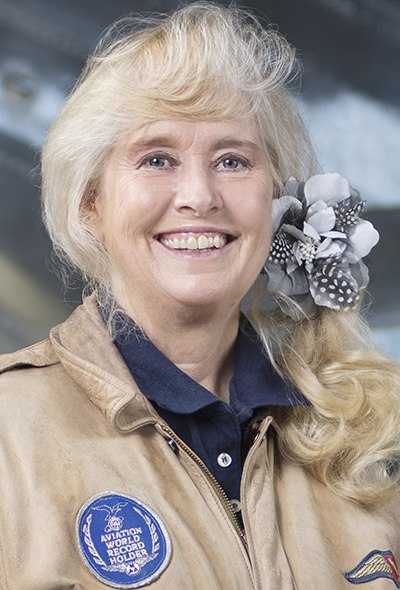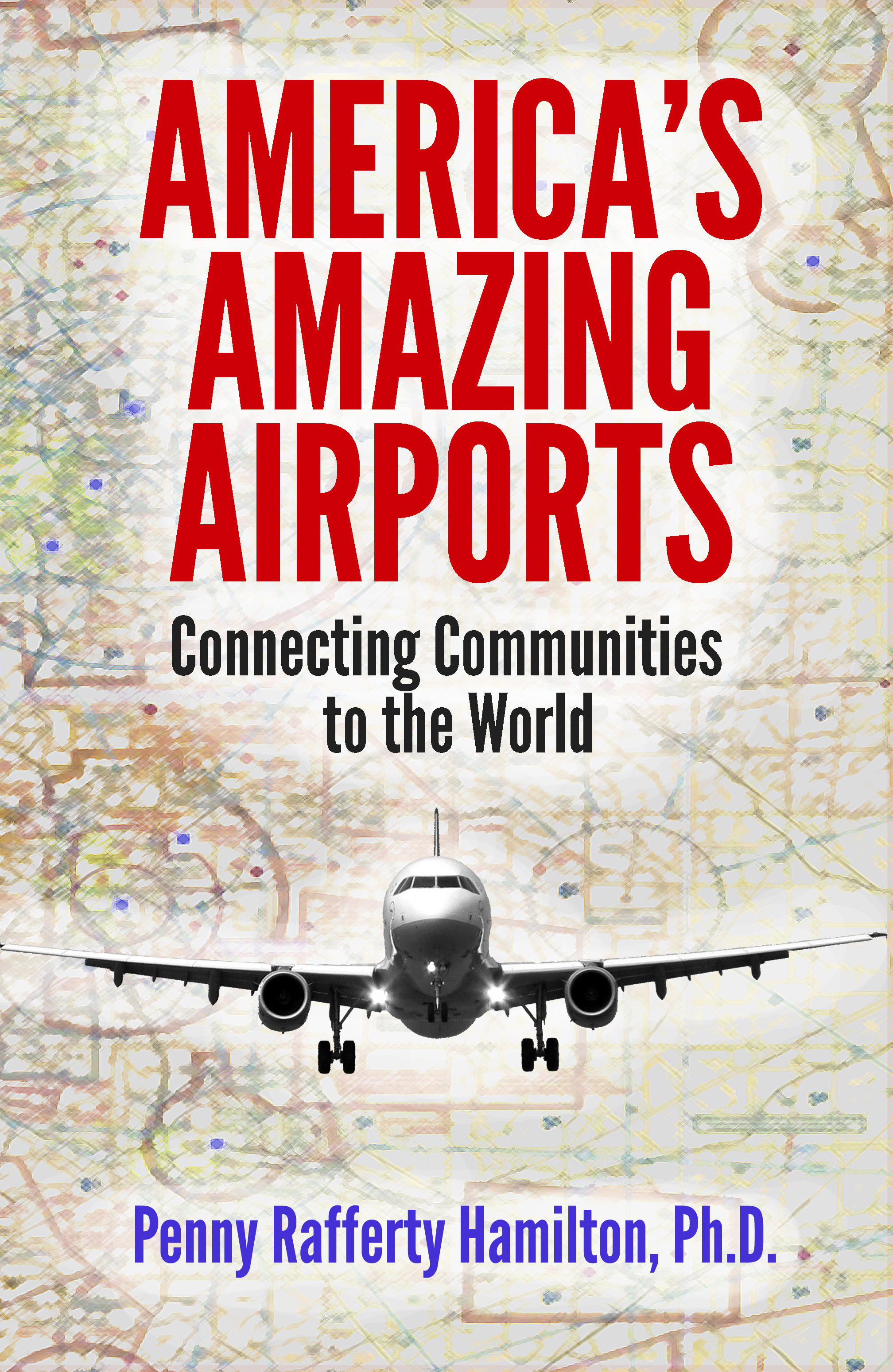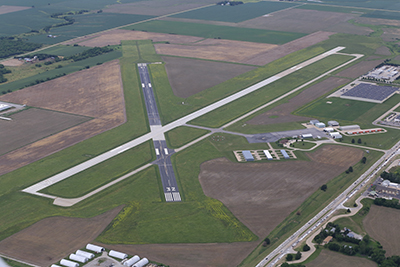America’s Amazing Airports Takes Readers on an Incredible Flight Path
 On February 2, 1925, the Air Mail Act, commonly known as the Kelly Act, became law. This legislation provided for transportation of mail on the basis of contracts between the Post Office Department and individual air carriers, a system that helped stimulate America's fledgling airlines and airports. The recently released book, America’s Amazing Airports, written by Penny Rafferty Hamilton Ph.D. (shown at right), takes readers on the incredible flight path our national aviation transportation system has taken from those early days over 95 years ago to today. The State Aviation Journal recently asked Dr. Hamilton about the book and what inspired her to write it. SAJ - Where did the inspiration for this book come from? On February 2, 1925, the Air Mail Act, commonly known as the Kelly Act, became law. This legislation provided for transportation of mail on the basis of contracts between the Post Office Department and individual air carriers, a system that helped stimulate America's fledgling airlines and airports. The recently released book, America’s Amazing Airports, written by Penny Rafferty Hamilton Ph.D. (shown at right), takes readers on the incredible flight path our national aviation transportation system has taken from those early days over 95 years ago to today. The State Aviation Journal recently asked Dr. Hamilton about the book and what inspired her to write it. SAJ - Where did the inspiration for this book come from?
 My husband and I are both General Aviation pilots, who worked closely with aviation groups to promote the many community benefits of airports for over 30 years. Public relations specialists know the importance of having a consistent, focused message told over and over again. Aviation and airports are inspirational and magical. Through the America’s Amazing Airports book I hope to help our aviation professionals share our enthusiasm with others as a lasting legacy in both print and eBook form.
It is meant as a public information tool for airports to share aviation career information with young adult readers (ages 14+) and an easy to read outreach/educational book for airports to share with their community and leaders. In addition to STEM career information, airport and even American history, I reviewed how we/aviation pay for airports. America’s Amazing Airports is a great size with plenty of photographs.
SAJ - How have airports impacted your life personally?
We all benefit from airports. Our food supply is multiplied with the help of Ag aviation. Medical services, commerce and industry, fire-fighting, tourism and economic benefits come through our national aviation system which is interconnected. As I say in the book title, “airports connect communities to the world!”
SAJ - What was the first airport you remember, and/or, is there an airport that stands out/has impacted you, more than another?
For 20+ years we lived in a small aviation community near Lincoln, NE, called Sky Ranch Acres. We had our airplane in our attached hanger/garage and our taxi-way took us to the grass strip where for years, national aerobatic champion, Dr. Charlie Carothers, would practice flying upside down and cutting a ribbon strung for him over the airfield. In America’s Amazing Airports, I wrote about unique aviation communities. In the “Explore More” chapter, www.LivingWithYourPlane.com is listed.
 Another important airport to me is Nebraska’s Beatrice Municipal-KBIE (shown at right) because 30 years ago I earned by private pilot license there and made life-long aviation friends. This is a model community airport, offering larger airport amenities combined with small town America service. Because I did not start flight training until age 40, I had a lot of world experience in education and business. Because I had a radio show, I felt very comfortable “on the air, even live.” So, I literally “flew the mic,” at first. Everyone who heard the Unicom knew exactly where I was in the pattern. I thought airplanes flew because of Marconi. I never heard of Bernoulli nor Venturi. I started out “Communicating, navigating, and finally, aviating!”
Of course, today, our own Granby/Grand County Airport-Emily Warner Field (KGNB) in Colorado provides a host of important benefits to our entire mountain community. But, for me personally, I am part of all volunteer team, who donate their time to encourage young children to explore aviation. We have an award-winning on-airport museum which invites all ages to learn more about our aviation history, use our flight simulators, check out aviation and aerospace books and videos. The Grand County Historical Association Emily Warner Field Aviation Museum is free and family-friendly- www.GrandCountyHistory.org. For over 25 years I have been the AOPA Airport Support Network Volunteer-ASNV, which is a nationwide effort to promote and preserve our community airports.
SAJ - As you researched and put all of the pieces of this book together, was there anything that surprised you?
 More inspired than surprised. This book was such a dream to research because of the many airport pioneers and aviation legends I rediscovered. I hope by reading American’s Amazing Airports our own contemporary aviation professionals reflect on the Herculean efforts our airport pioneers gifted to us.
America’s Amazing Airports does include stories about aviation legends, Eddie Rickenbacker, Charles Lindbergh, Wiley Post, Chuck Yeager, Arnold Palmer, and others. But, it also inspires with the less well-known early air mail pilots as Jack Knight. Or, the pioneer air marking efforts of Blanche Noyes. Or, military aviators as Joe Foss, Bud Day, Paul Boire, Richard E. Fleming, Ployer Peter Hill and several more. I hope this new, easy to read, print or eBook helps us reflect on so many pioneers of aviation and airports because often we take our airports for granted. But, examples as the closed Bader Field in Atlantic City and Santa Monica Airport should remind us of the importance of promoting the many and tangible benefits community airports provide daily to everyone. America’s Amazing Airports is a tool to do just that. More information on America’s Amazing Airports author is available at www.PennyHamilton.com Dr. Hamilton is the 2012 NASAO National Journalism Award winner.
|